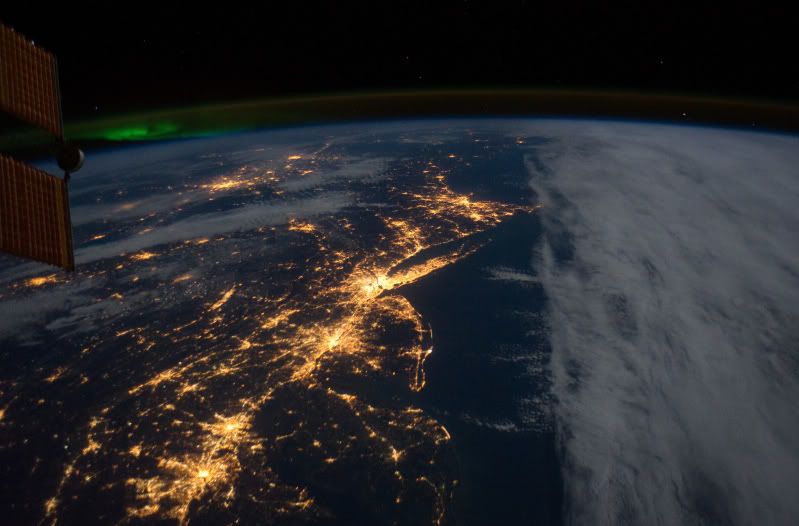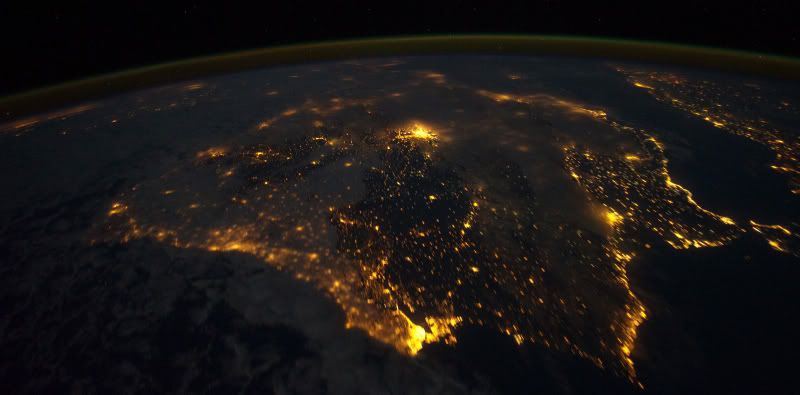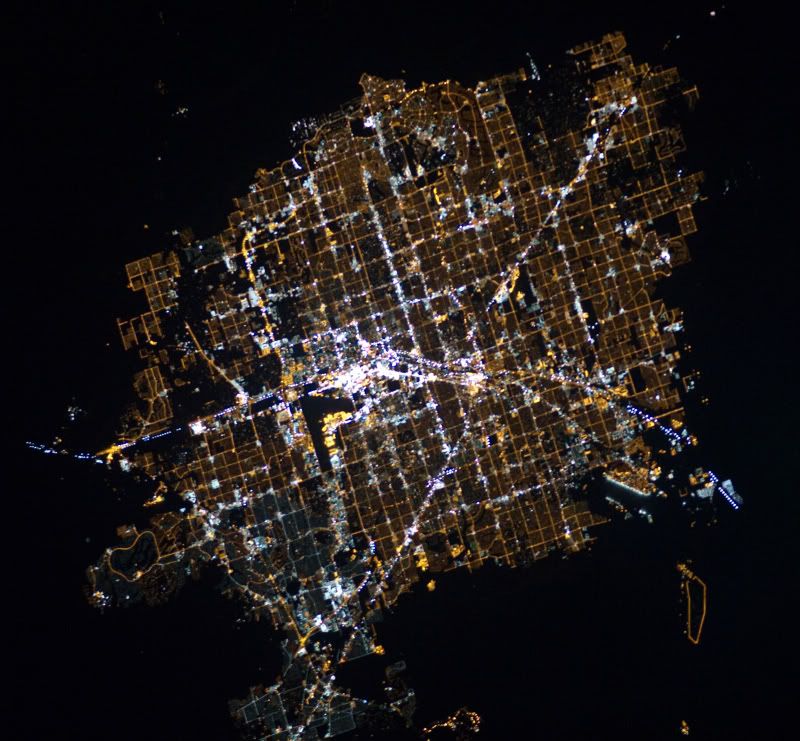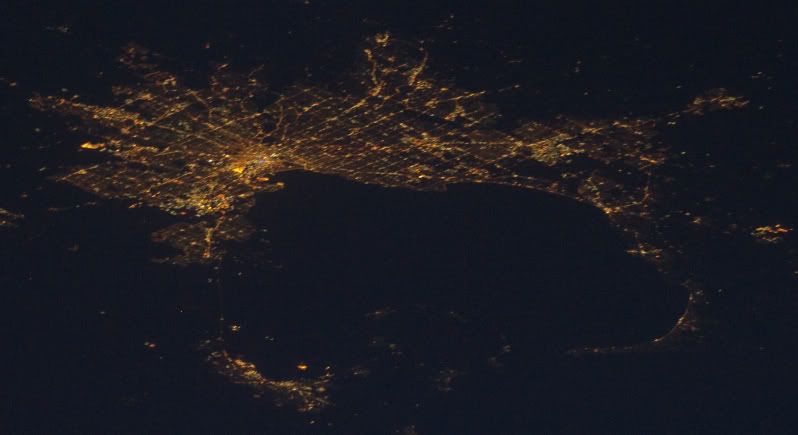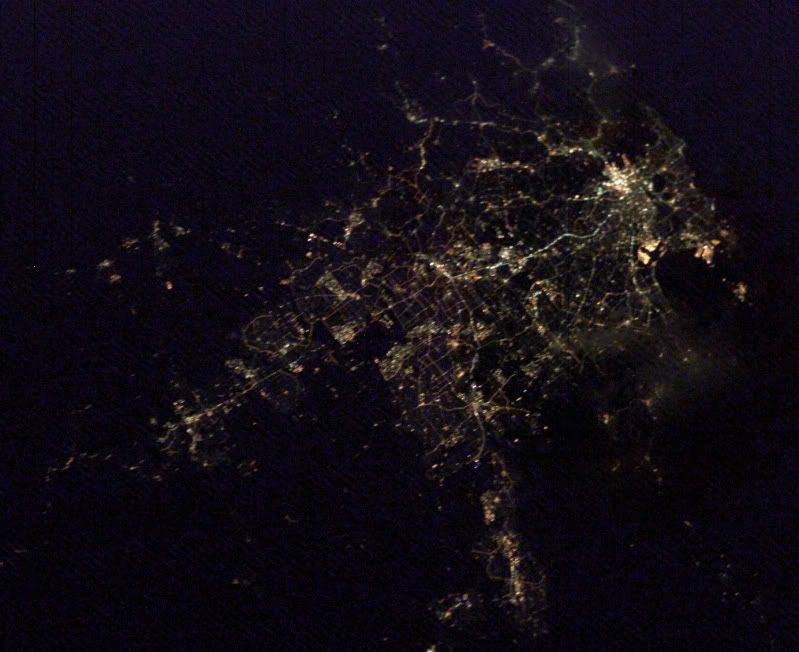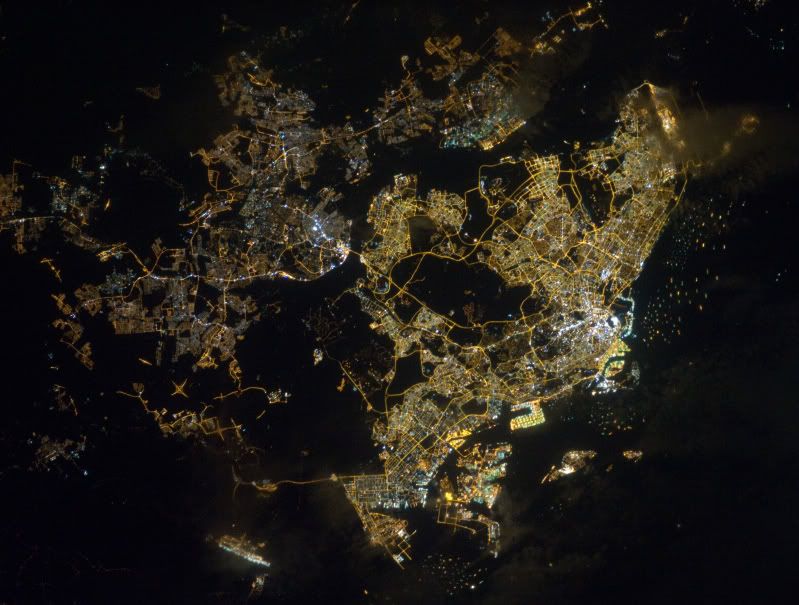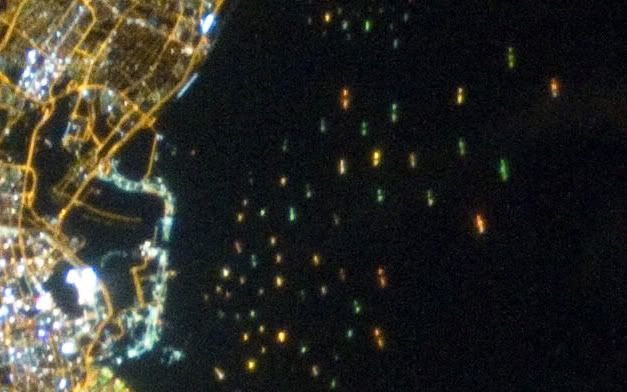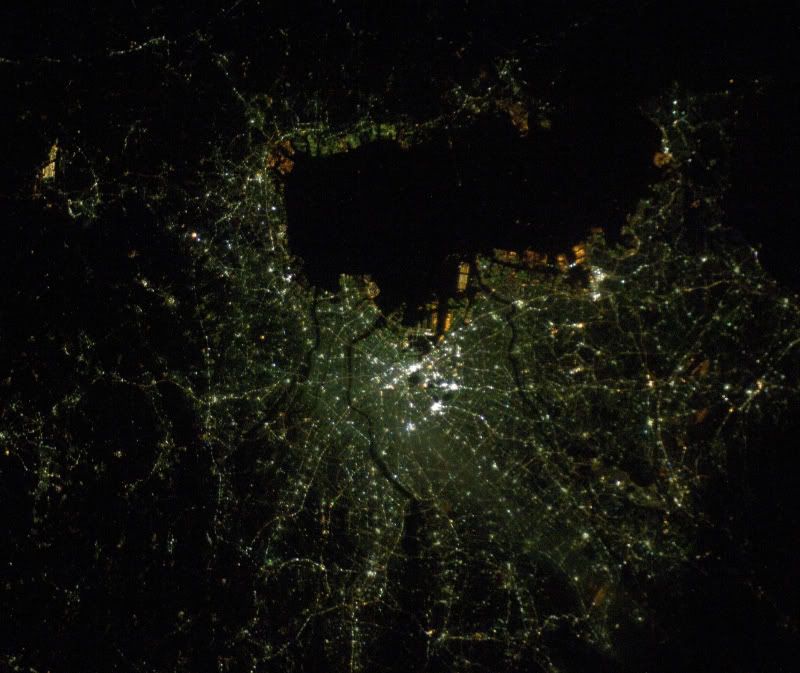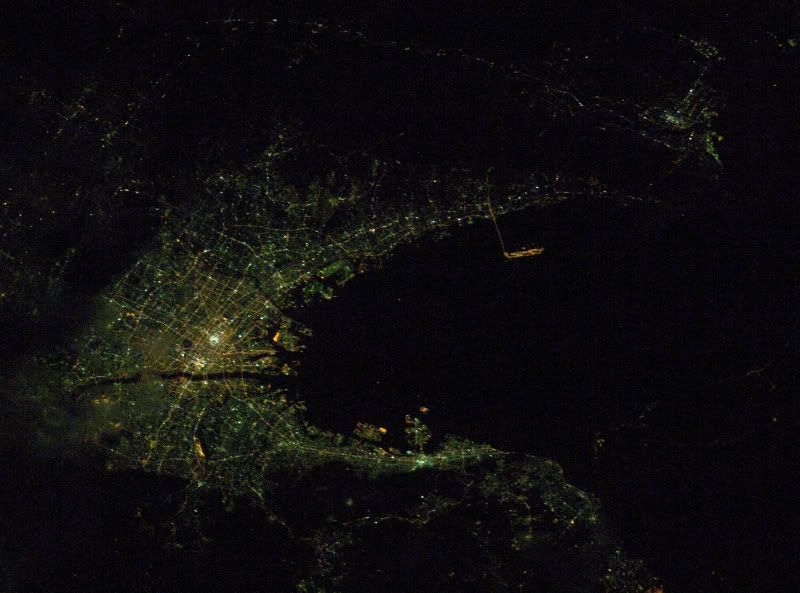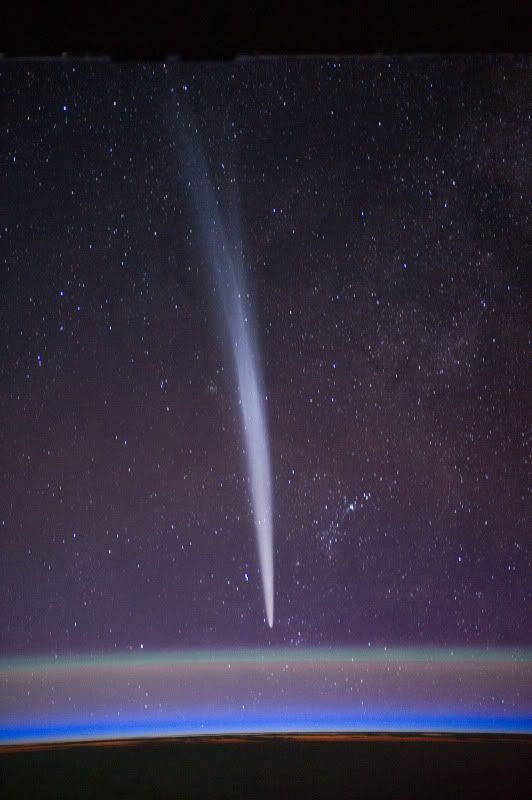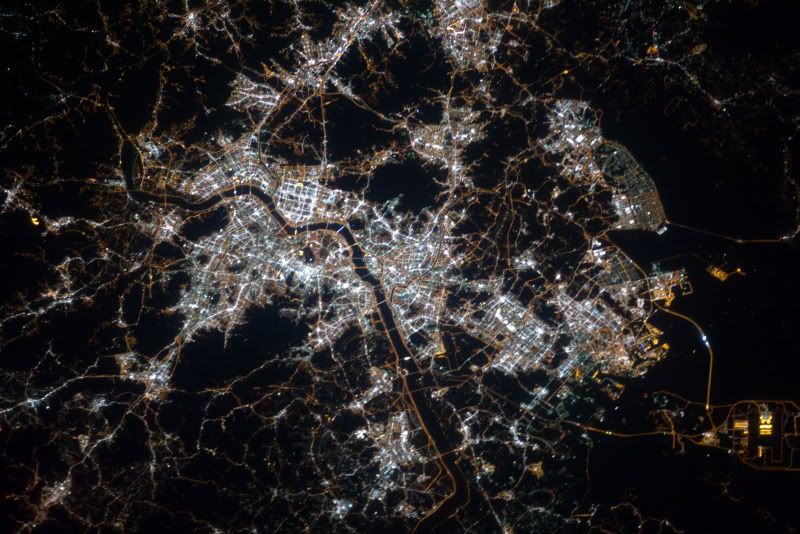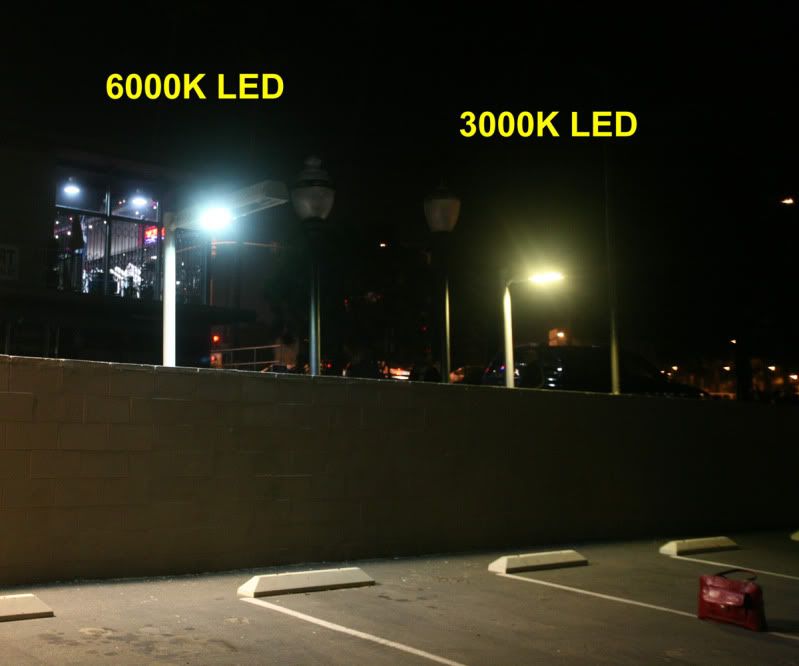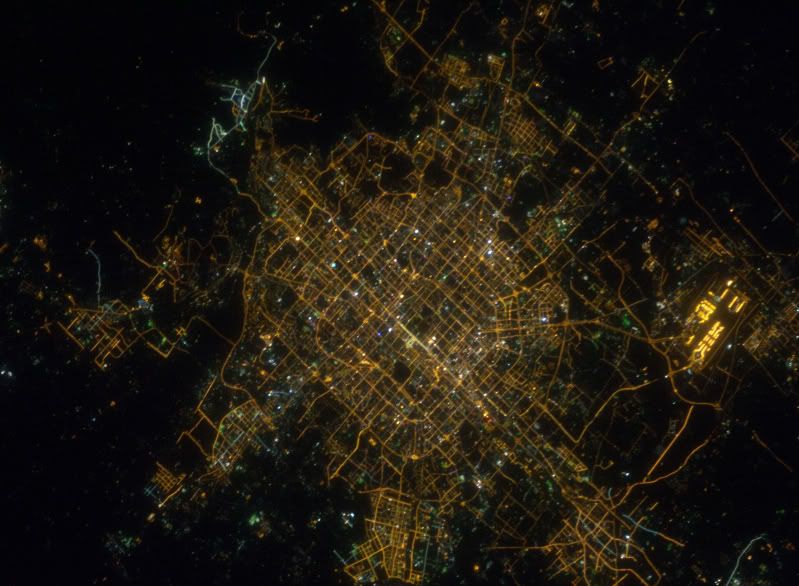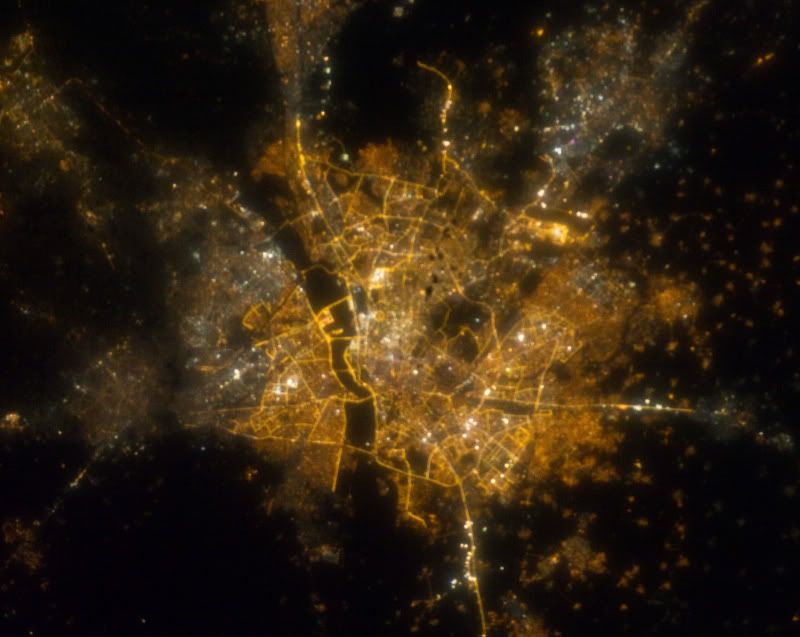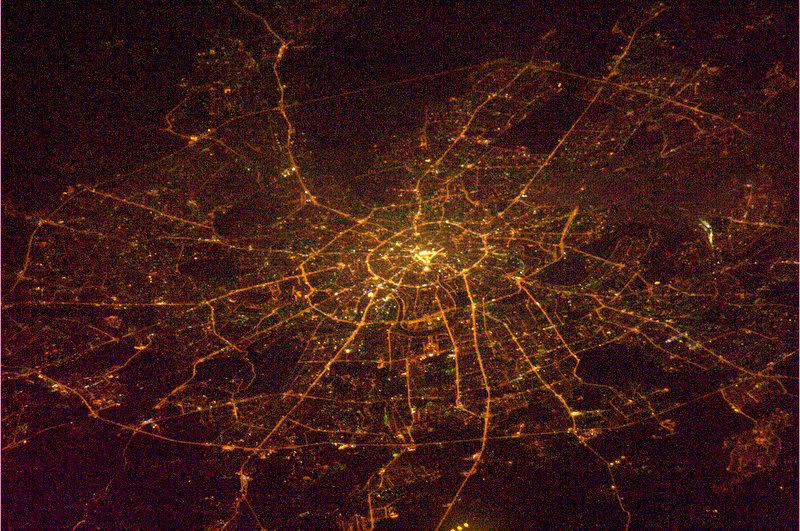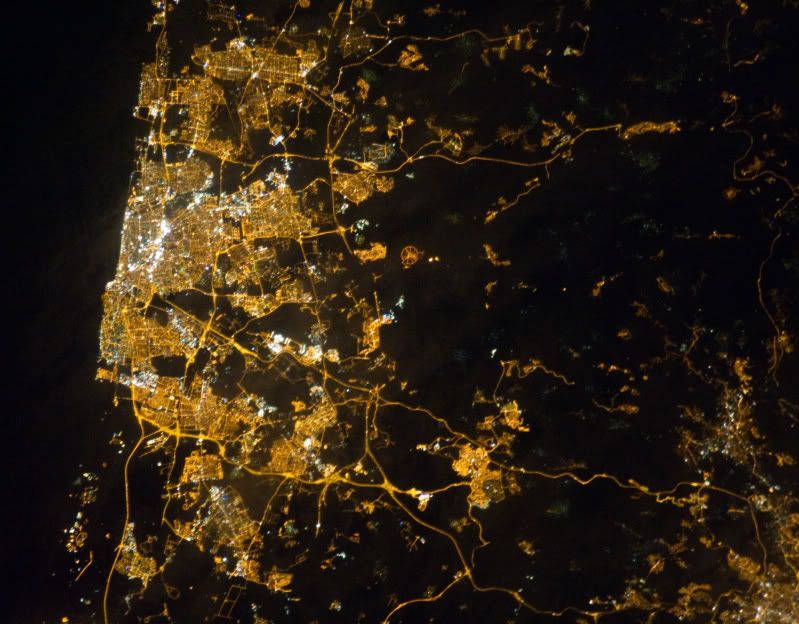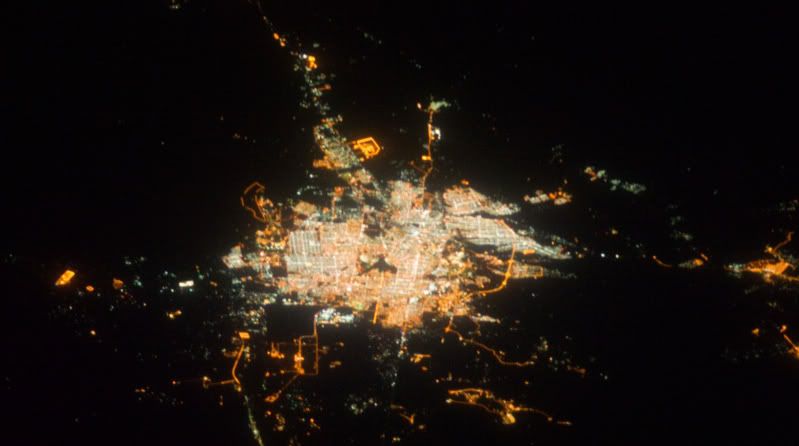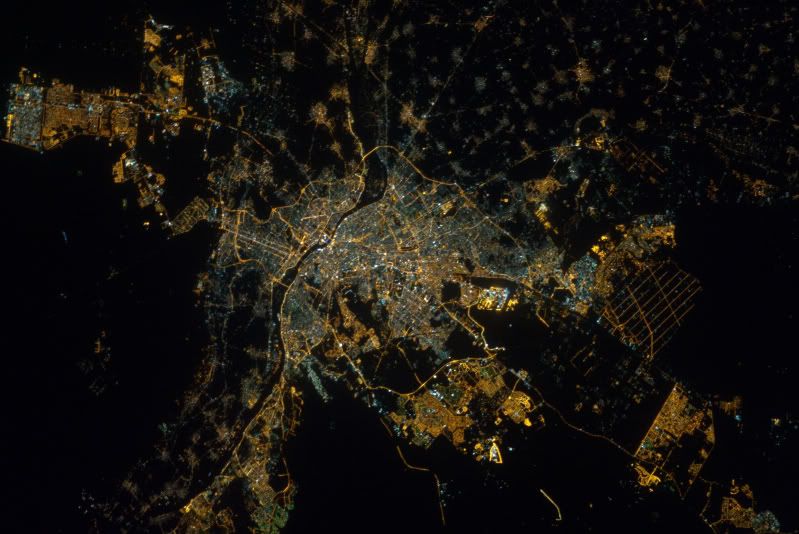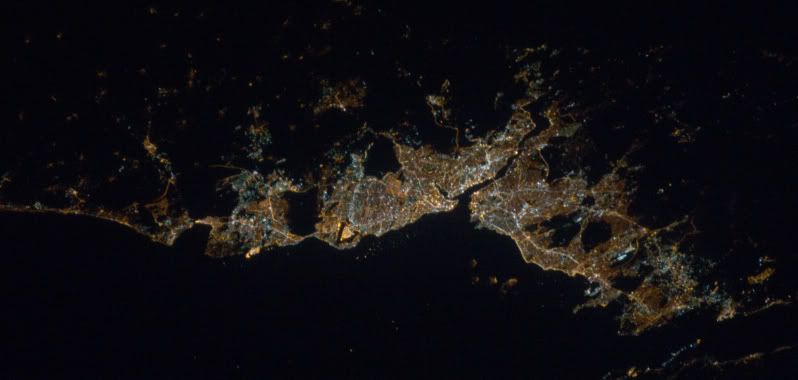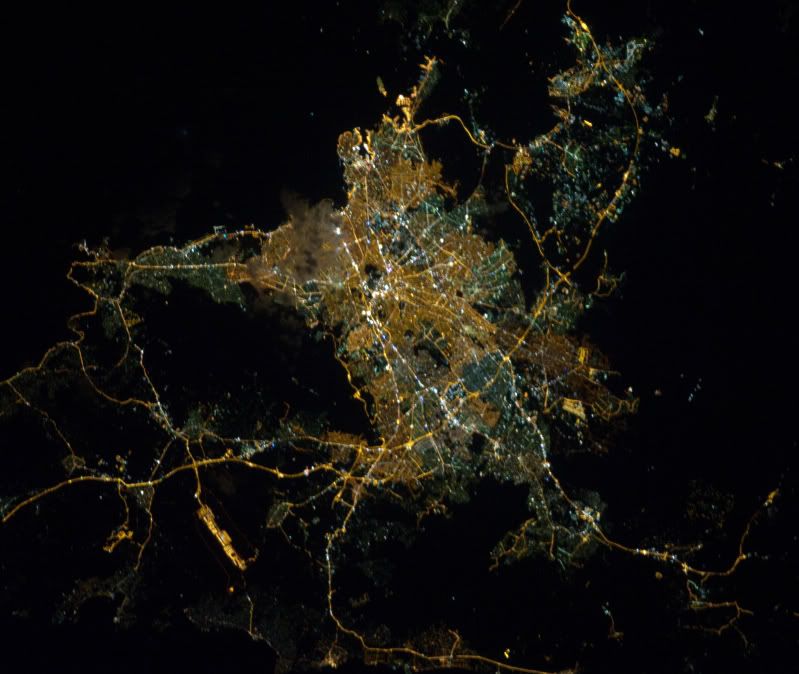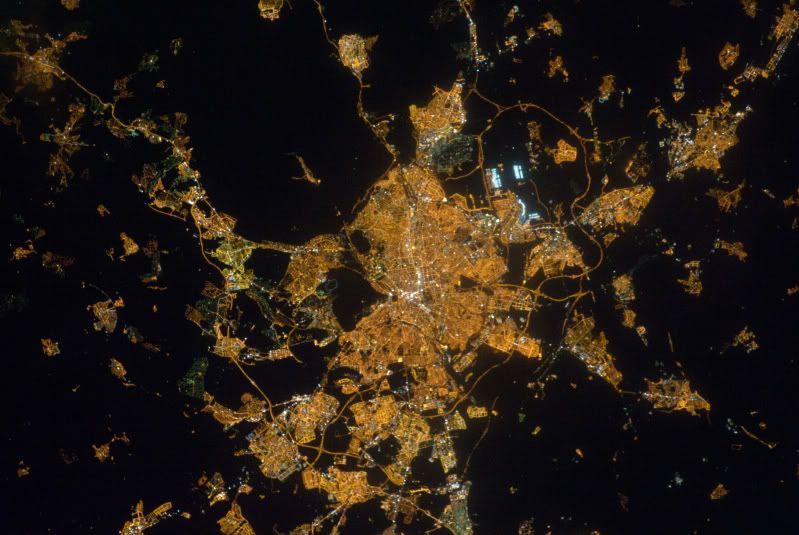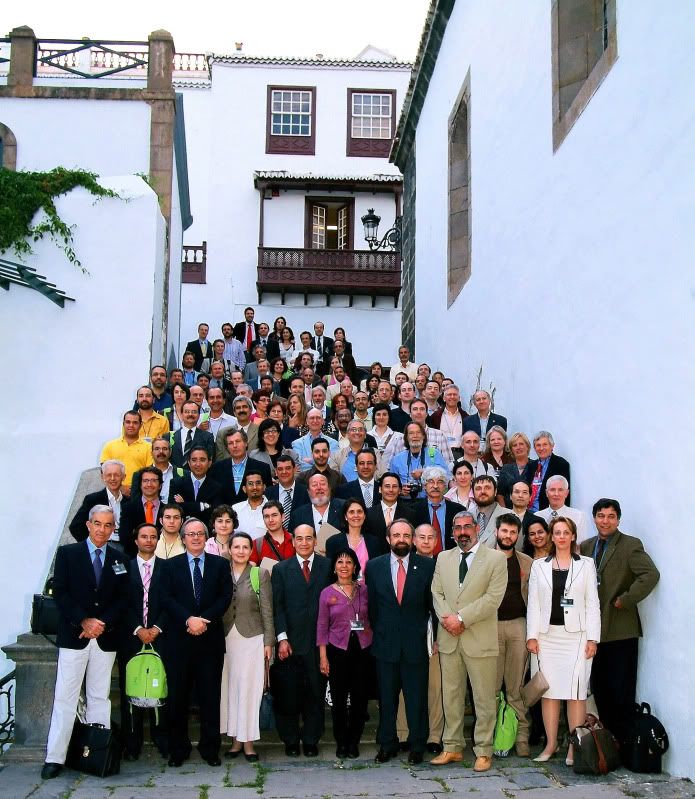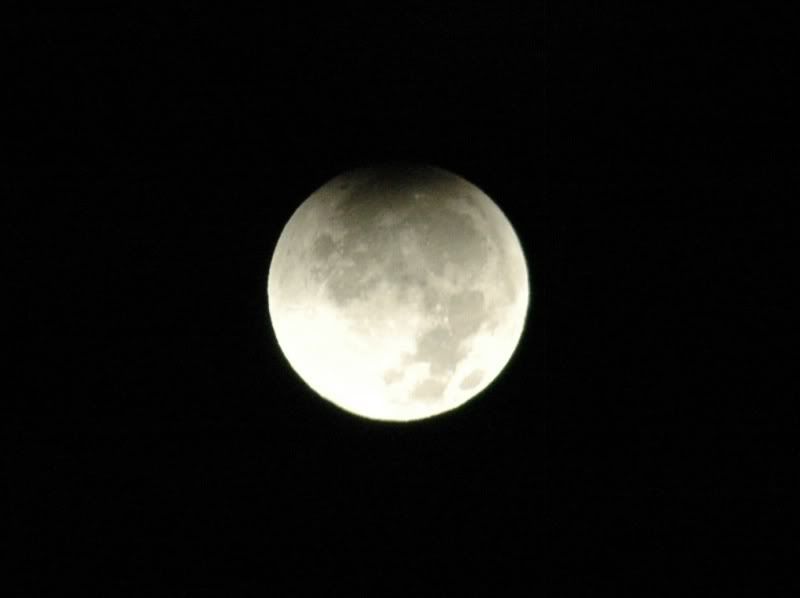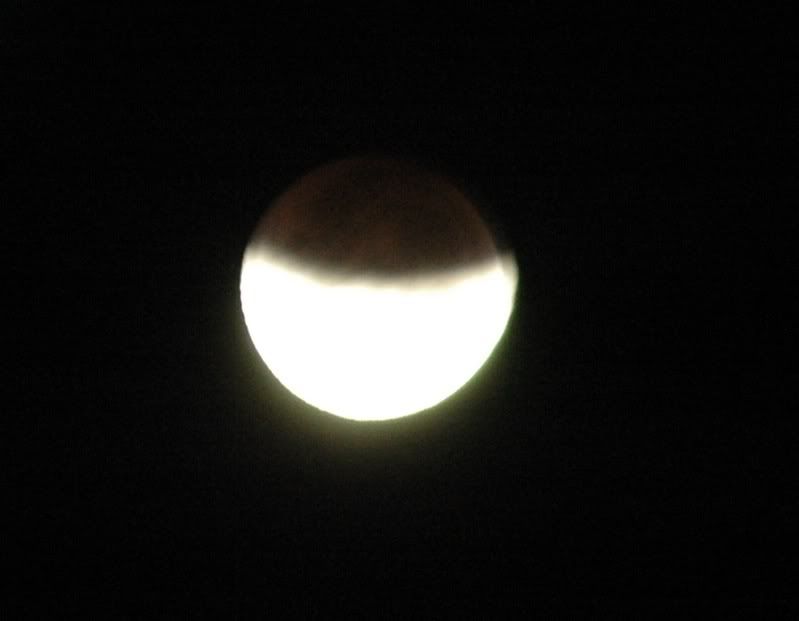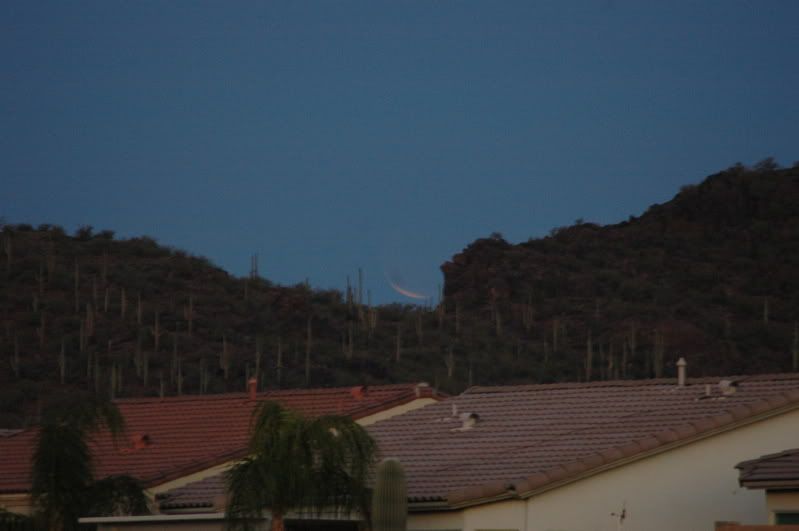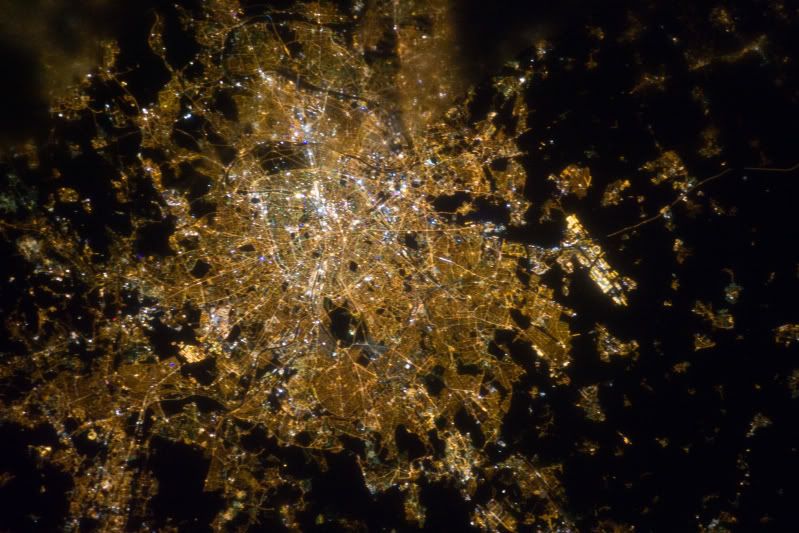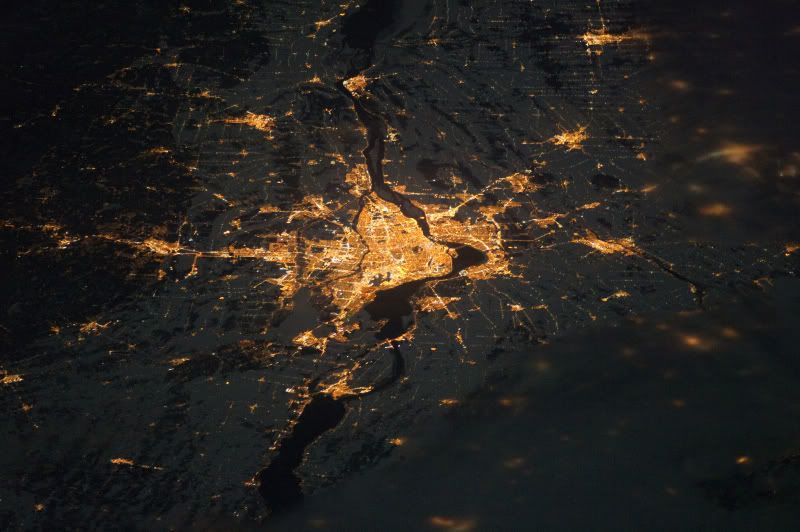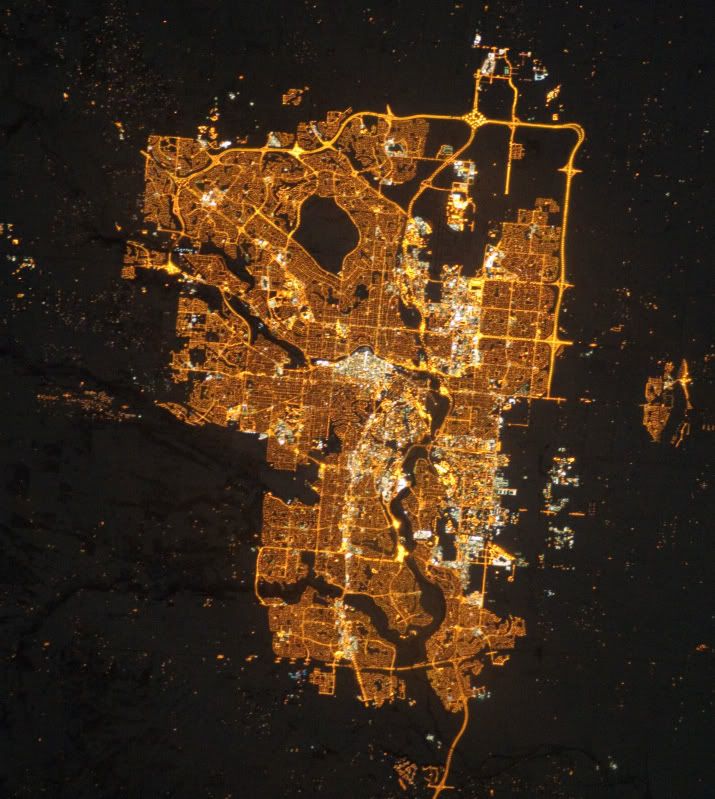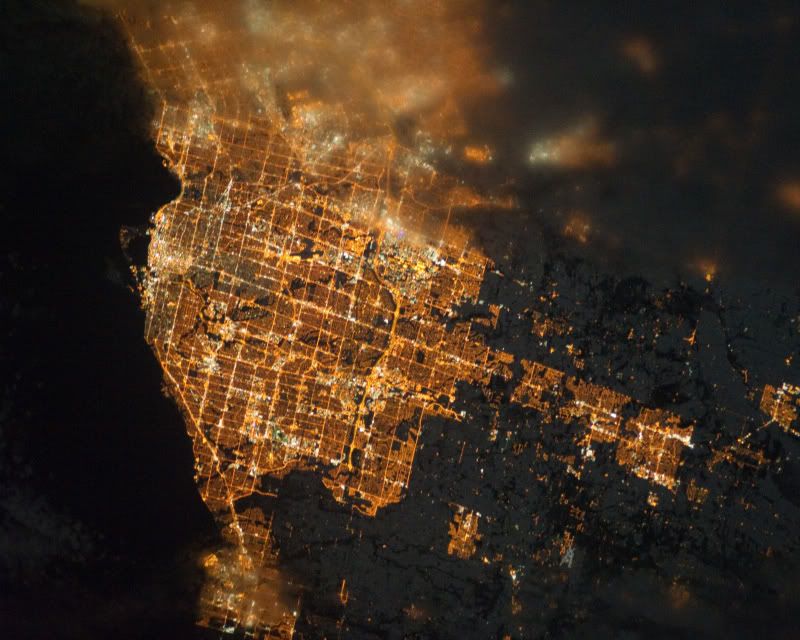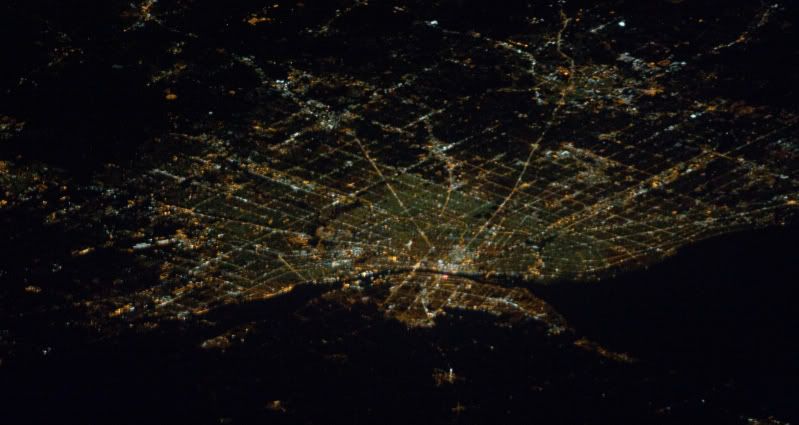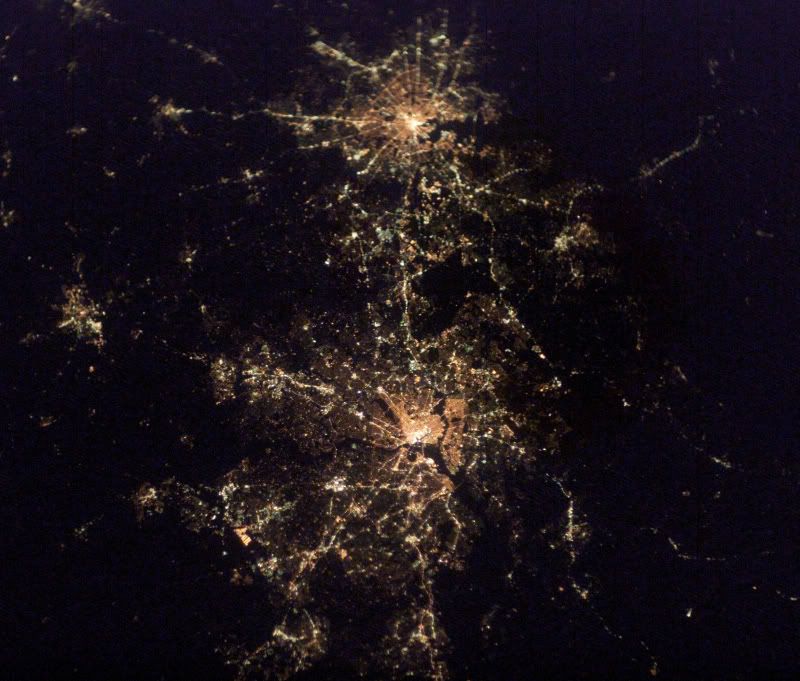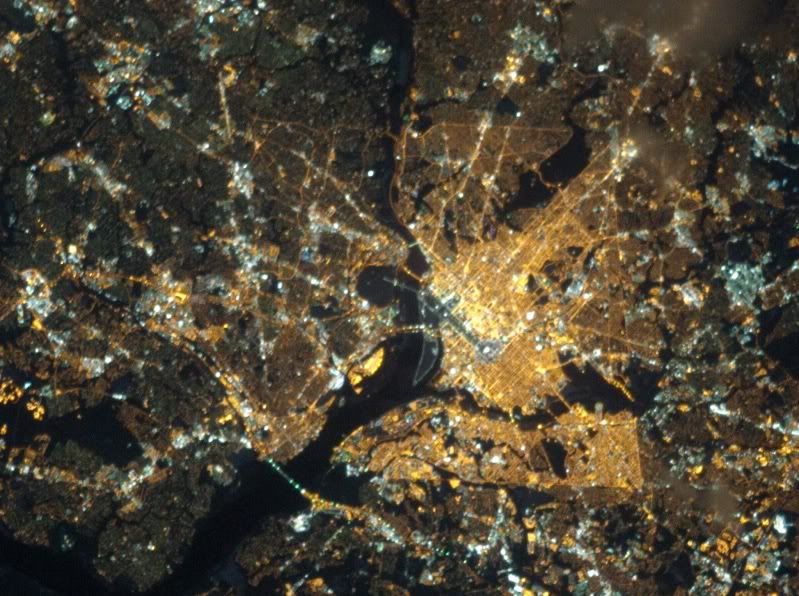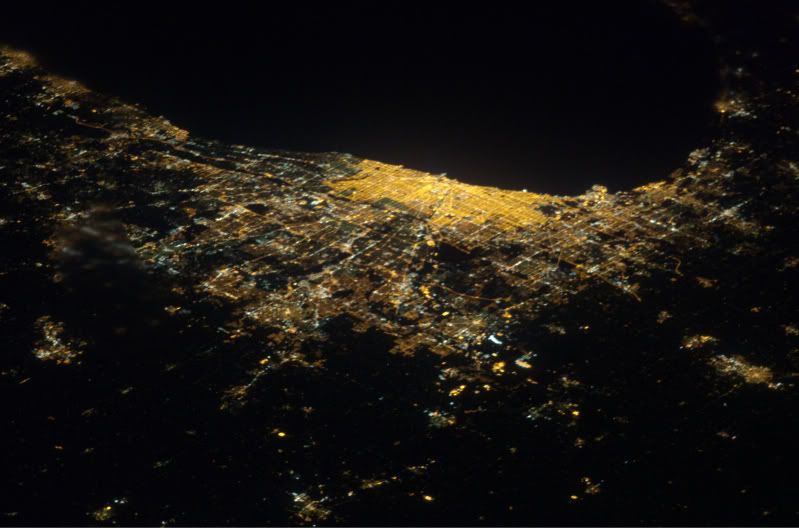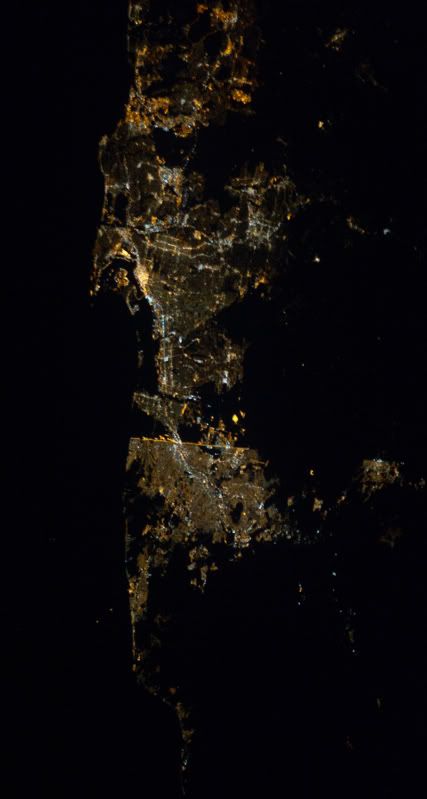Here is a photo taken April 6, 2003 by the Expedition 6 crew of the International Space Station:
It shows the cities of Baltimore, Maryland (top) and Washington, DC (along with the communities that surround it). The most startling thing about the image to me is that you can actually see the borders of Washington, DC - that's how bad the lighting is there.
Of course the monuments of our nation's capitol are illuminated. That's not the source of illumination that defines its border. You can see the border of Washington, DC because the town is filled with many, bright unshielded street lights.
 |
| A typical unshielded "acorn" light in our nation's capitol |
Have a look at this second photo of DC from space. This one was taken December 18, 2010 by the ISS Expedition 26 crew:
The lighting with DC is obviously different from the lighting beyond its borders. The many bright, unshielded lights of our nation's capital are an excess that we can't afford. By shining up and out, instead of down where the people forms a vivid example of government waste.
Just to make it clear that the Monument District of DC is not to blame here, let's zoom in a bit to show it off:
Other than the dark waters of the Potomac, the Monument District is the
darkest part of DC. Yes, the part of town where bright lights are pointed upward to illuminate the U.S. Capitol, the Washington Monument and more is dimmer than the lighting for the rest of town.
There is much work to be done to clean up light pollution.
